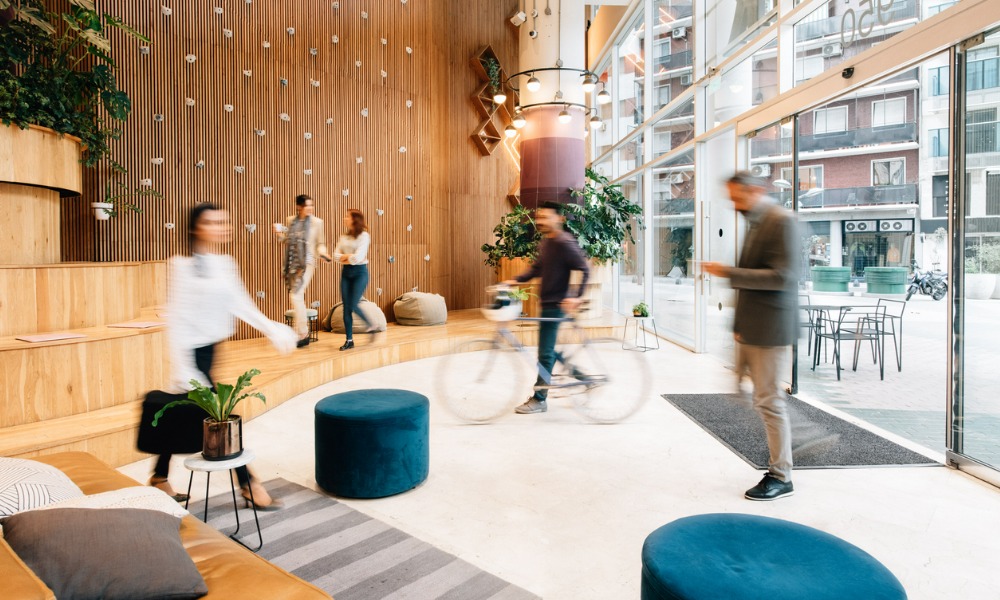New technology, hybrid models part of solutions

Businesses seem to be humming along at nearly complete capacity as many workers return to some sense of normalcy, according to a recent survey.
Almost six out of 10 (57%) of employees surveyed by Ipsos said they are back in the office while a smaller subset are remaining at home and working on hybrid situations (13% and 4%, respectively).
Does this mean that the pandemic is over, and we can all get back to business?
For 58% of respondents, they can’t even do their work remotely so back to the workplace it is, which in itself seems like we are back to the old ways of work.
But for many employees, they feel the pull of internal company pressure to get back to the office, according to Allison Schrager, a senior fellow at the Manhattan Institute who spoke recently to Bloomberg.
“Ideally, work-from-home will continue to exist in some form — perhaps as an option if you work on contract and crave more flexibility. Or you can use the option when you need it, such as when your child is sick. Otherwise, everyone needs to go back,” she said.
“We now have the technology to telecommute in many jobs, and the pandemic pushed that transition forward. But technology and culture don’t always change at the same rate.”
Other reasons cited in the survey of more than 1,000 adult Canadians conducted on behalf of Global News in June, were productivity, getting away from the home, missing their colleagues and just a simple yearning to get back to the office.
What perks work?
For businesses, what should they be offering employees to entice them back?
If you are thinking foosball tables and video consoles, that is the wrong idea and what workers really want is a productive place to get some actual work done.
According to another survey, done by office pod furniture manufacture Framery, fitness perks, such as yoga studios and office gyms (46%), and access to a designated quiet space (44%) are the workplace bonuses they crave most (out of drinks on tap, cool office designs and communal games/fun).
“[Employees] have high ambition, they want to be good at what they do and a ping pong table is not really a good way of being better at what you do,” said Samu Hällfors, CEO of office pods manufacturer Framery Acoustics in Tampere, Finland.
While these workers look for more ways to do great work, that doesn’t necessarily mean that can happen in an open-office layout, said the survey of 4,044 US-based employees, between May 10 and 15.
‘Negative memories’
“People have still have a top-of-mind idea of how it was working from the office when everybody had their own rooms, so maybe people remember those horrible cubicle offices,” said Hällfors.
Those “negative memories” were cited by workers as causing a real drag on productivity, he said, especially considering the new way of communication being practiced at many organizations.
With a five-fold increase in the amount of video conferencing meetings taking place because of the pandemic, many workers believe they cannot concentrate enough while employees all around them conduct these never-ending series of meetings in the open-office workspace.
The solution to this problem, according to survey respondents, is access to quiet areas for concentration, as 65% said this would improve their work-life balance, but 51% of workplaces don’t have enough such spaces. Fifty-seven per cent (57%) said that access to quiet spaces is the best office perk.
“People really care about what they work on, and they care about the results of their work. They care about things that enable them to work more efficiently,” said Hällfors.
What about hybrid?
Hybrid has been seen as perhaps the best of both worlds as it allows employees to pick and choose where to work on any given day but what effect might this have on the work culture?
The survey, done by Genpact, a global professional services firm, heard from 500 senior executives across the US, UK, Germany, Australia, Japan and Canada found that employees are moving away from being social to being much more focused on solving problems.
“In a post-pandemic world, leading companies will be defined not just by their ability to get work done, but in their ability to create agile, adaptable, hybrid work environments that allow culture and creativity to thrive,” said Tiger Tyagarajan, CEO of Genpact.
By relying on technology, these new models can deliver great results, he said.
“As people adjust to a hybrid world, companies must remember that work requires collaboration and deep human connection — wherever it is performed. Technology can play an important role in supporting a hybrid environment that works for both employees and customers, while delivering long-term business and individual success.”



